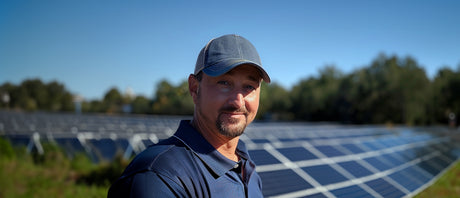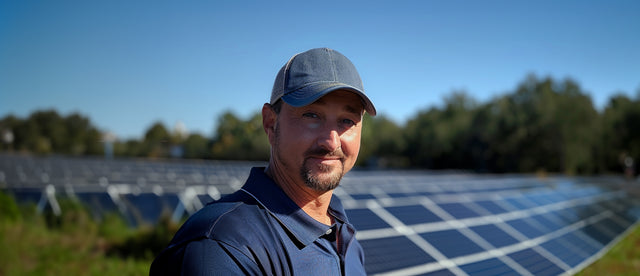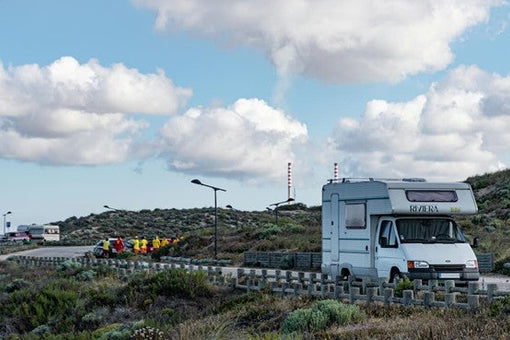Australia is known for its beautiful green land and blue waters. But, unlike its land, the condition of electricity could be more green. Australia is currently grappling with a significant challenge that affects every household and business – the rising cost of electricity.
In recent years, Australians have experienced a notable increase in electricity prices, prompting concerns about the sustainability of energy consumption patterns and the overall economic impact. Electricity costs are anticipated to experience a continual annual increase of 9% over the upcoming four years.
The Australian Energy Regulator points to surging wholesale power expenses, which have surged by over 140% in the last twelve months. The AER has recently declared its intention to transfer significant hikes in consumer prices, with the established benchmark for electricity prices set to increase by 18.3%.
The default market offer (DMO) for residents in the NSW region is expected to rise between 8.5% and 18.3%, a considerable increase compared to the inflation rate. While the AER has not unveiled a DMO for the ACT area, the soaring wholesale power costs are anticipated to have repercussions nationwide.
Factors That Affect Electricity Prices In Australia
Several factors contribute to the escalating electricity prices in Australia, creating a complex web of challenges for consumers and businesses alike.
-
Infrastructure costs
A key factor leading to the escalation of electricity prices is the ongoing necessity for investing in energy infrastructure. Aging power plants and transmission networks necessitate enhancements to meet contemporary standards and accommodate growing demand. These expenses are frequently transferred to consumers, leading to elevated electricity bills.
-
Policy and regulatory frameworks
Fluctuating government policies and regulatory frameworks can impact the energy market, influencing electricity prices. Uncertainty surrounding future regulations may lead to hesitation among investors, affecting the stability of the energy market and contributing to price volatility.
-
Transition to renewable energy
While Australia is making commendable strides towards a greener future by transitioning to renewable energy sources, the initial investment in renewable infrastructure has led to a temporary spike in electricity prices. Although the long-term benefits are evident, the transitional period poses financial challenges for consumers and energy providers..

-
International market forces
Australia is interconnected with the global energy market, and fluctuations in international energy prices can have a cascading effect on domestic prices. Events such as geopolitical tensions, natural disasters, or worldwide demand and supply shifts can influence the cost of energy imports and exports.
Recent events, including the conflict in Ukraine and natural disasters, have further exacerbated energy prices. Disruptions in the coal supply chain and heightened demand for fossil fuels during extreme weather events contribute to this trend. The ongoing energy price hikes are anticipated until there is a resolution in the Ukraine conflict and potentially increased oil production by OPEC to alleviate pressure on fossil fuel prices.

Wholesale energy prices in Australia are rising due to the global increase in the cost of fossil fuels, such as coal and gas, which the country predominantly exports. This surge is driven by escalating worldwide prices for these resources and the accompanying rise in transportation expenses, directly impacting the generation cost of electricity from fossil fuels.
The increasing cost of electricity has far-reaching consequences that extend beyond individual households to impact businesses, industries, and the overall economy in Australia.
Impacts Of Rising Electricity Prices
Here are some impacts of rising electricity prices.
-
Financial strain on households
Higher electricity prices place an additional financial burden on households, particularly those with fixed or low incomes. As essential appliances and services rely on electricity, these price hikes disproportionately affect vulnerable populations, exacerbating energy poverty issues.
-
Impact on businesses
Small and medium-sized enterprises (SMEs) are particularly vulnerable to rising electricity prices. Increased operational costs can lead to reduced profitability, hinder business expansion, and even result in job losses. Australian businesses need help to compete with other companies worldwide.
-
Environmental concerns
While the transition to renewable energy is essential for environmental sustainability, the initial financial implications may deter some consumers and businesses from adopting eco-friendly practices. Balancing economic viability with environmental responsibility is a delicate task that requires careful consideration and strategic planning.
Addressing the challenges posed by rising electricity prices requires a comprehensive approach that involves collaboration between the government, industry stakeholders, and consumers.Solutions To Mitigate The Impact Of Rising Electricity Prices In Australia
Here are some common solutions to mitigate the impact of rising electricity prices in Australia.-
Investment in smart grid technology
Implementing smart grid technology can enhance the efficiency of electricity distribution, reduce transmission losses, and enable better demand management. Smart grids empower consumers with real-time information, encouraging energy conservation and optimizing usage patterns.
-
Diversification of energy sources
Australia should continue transitioning to diverse renewable energy sources like solar, wind, and hydroelectric power. This diversification can mitigate the impact of price fluctuations in any single energy sector and contribute to a more stable and sustainable energy market.
There are many great brands in the Australian market that provide solar solutions. One such reputed brand is BLUETTI. This brand has amazing product offerings regarding power saving and going green.
For example, BLUETTI EP500Pro Solar Power Station | 3,000W 5,120Wh has an innovative 5100Wh LiFePO4 battery pack and a powerful 3000W rated pure sine wave AC inverter. This cutting-edge power station empowers you to energize your gathering, family camping adventure, cabin workshops or even sustain your whole house for a day or two during unexpected power outages. With a remarkable 14 outlet sources, you can effortlessly power a wide range of devices,

The BLUETTI AC500 + B300S Solar Generator Kit is another brilliant technology. Charge your AC500 system anytime, anywhere. Whether connected to a wall outlet or solar panels, the AC500 system boasts an impressive input rate of up to 8,000W (requires at least 2*B300S packs). Recharge the system before heading out camping, ensuring your power is ready whenever needed.
Moreover, The AC500 is entirely modular, accommodating up to 6×B300S (3,072Wh each) expansion battery packs, providing a total capacity of 18,432Wh. This robust power station is designed to fulfill the essential needs of your entire family for days, whether for everyday use or during power outages. The inverter guarantees a high-quality pure sine wave output and can handle surges of up to 10kW, ensuring optimal functionality and capacity for anything you plug in.
Long-term policy stability
Governments at both federal and state levels should provide clear, consistent, and long-term policies to create a stable regulatory environment. This stability encourages investment in the energy sector, fostering innovation and growth while minimizing uncertainty in the market.
Promotion of energy efficiency programs
Encouraging energy efficiency at the individual and industrial levels can help reduce overall electricity consumption. Government-led initiatives, such as subsidies for energy-efficient appliances and industrial processes, can incentivize adopting sustainable practices.
Community engagement and education
Educating the public about energy conservation and the implications of electricity consumption is crucial. Community engagement programs can empower individuals to make informed choices about their energy usage, fostering a culture of responsible energy consumption.
FAQs about Electricity price rises and changes in Australia
Why are electricity prices increasing in Australia?
Electricity prices are rising due to factors such as investments needed in energy infrastructure, the global increase in fossil fuel costs, and disruptions caused by events like the war in Ukraine and natural disasters.
How does the age of power plants contribute to rising electricity bills?
Ageing power plants require upgrades to meet modern standards and handle growing demand, increasing costs. These costs are often passed on to consumers, impacting electricity bills.
Why is Australia's dependence on fossil fuel exports affecting domestic energy prices?
Australia exports a significant amount of fossil fuels. As the global prices of coal and gas increase, coupled with rising transportation costs, the domestic electricity generation cost from these fossil fuels rises, influencing wholesale energy prices.
What role do recent global events play in the increase in energy prices?
Australia exports a significant amount of fossil fuels. As the global prices of coal and gas increase, coupled with rising transportation costs, the domestic electricity generation cost from these fossil fuels rises, influencing wholesale energy.
Will there be relief in energy prices with OPEC increasing oil production?
Increased oil production by OPEC could release some pressure on prices for fossil fuels, providing potential relief in energy prices in the future.
How do extreme weather events affect energy prices in Australia?
Extreme weather events lead to increased demand for fossil fuels and disruptions in the coal supply chain, contributing to domestic energy prices.
How can businesses in Australia cope with the rising electricity prices?
Businesses can adapt by investing in energy-efficient practices, exploring renewable energy sources, and staying informed about government policies. Optimizing energy usage and considering alternative energy options can help mitigate the impact of rising electricity prices.
Final Words
Australia faces a multifaceted challenge with the escalating cost of electricity, driven by factors ranging from the need for continuous energy infrastructure investment to global events impacting fossil fuel prices. The strain on households and businesses is evident, with the potential to compromise the competitiveness of Australian enterprises in the worldwide market.
Community engagement and education play pivotal roles in fostering responsible energy consumption. While global events like the war in Ukraine and natural disasters add uncertainties, a concerted effort toward renewable energy adoption and efficient energy practices is crucial. Australia's journey toward a more sustainable and economically viable energy future requires collaboration, innovation, and a collective commitment to balancing environmental responsibility with economic realities.



















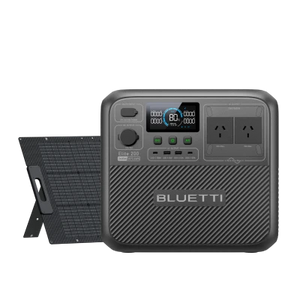

















































![[Phased Out] BLUETTI B80P Expansion Battery | 806Wh](http://www.bluettipower.com.au/cdn/shop/files/202310025B80P_2000-2000px_4_4caa0c1c-4dab-4272-9e9b-2b7507e5bd81.jpg?v=1713777870&width=200)
![[Phased Out] BLUETTI B210P Expansion Battery | 2,150Wh](http://www.bluettipower.com.au/cdn/shop/files/2_08cf9ef3-03a4-4489-b641-d3edb8094896.webp?v=1716016566&width=200)









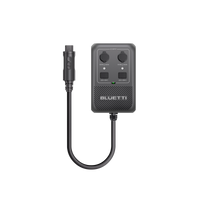








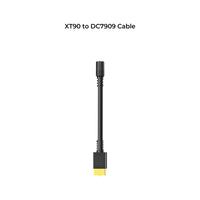































































































![[Phased Out] BLUETTI B80P Expansion Battery | 806Wh](http://www.bluettipower.com.au/cdn/shop/files/202310025B80P_2000-2000px_4_4caa0c1c-4dab-4272-9e9b-2b7507e5bd81.jpg?v=1713777870&width=120)
![[Phased Out] BLUETTI B210P Expansion Battery | 2,150Wh](http://www.bluettipower.com.au/cdn/shop/files/2_08cf9ef3-03a4-4489-b641-d3edb8094896.webp?v=1716016566&width=120)







































